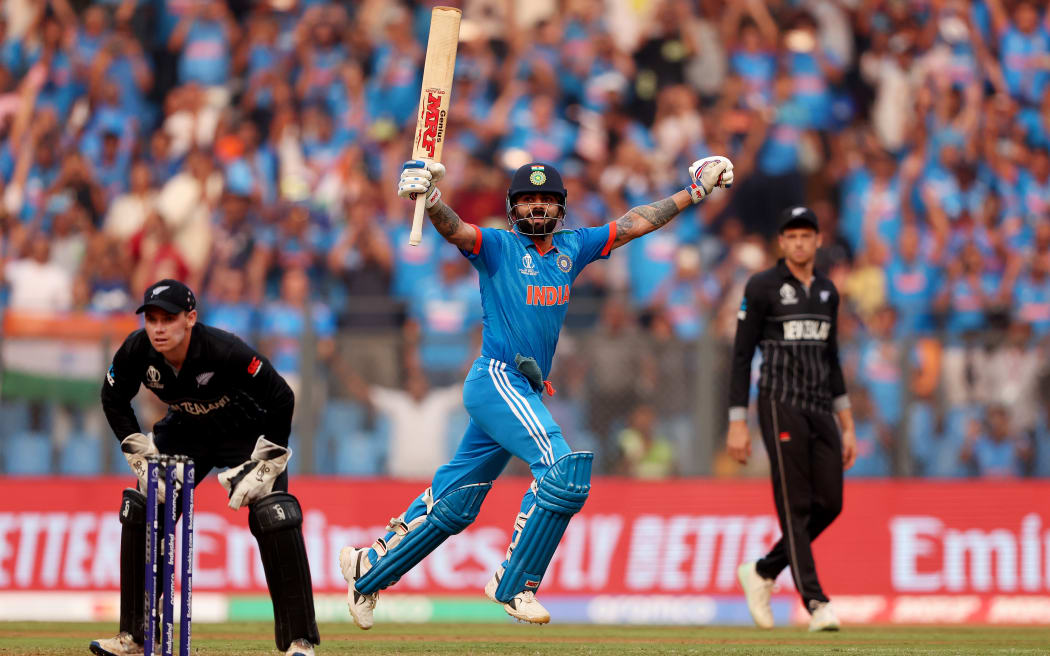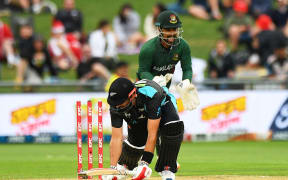
Cricket is perhaps the pitch sport most at risk from a changing climate. Photo: Robert Cianflone
The recently concluded men's Cricket World Cup in India reached record audiences. But there was one thing the organisers did not want those viewers to see (other than India's defeat by Australia in the final): cricket's own climate crisis.
Along with battling heat and humidity, players were forced to contend with unhealthy air created by pollutants from vehicles, factories and construction, and aggravated by increased temperatures in 20 of the 47 matches.
As Indian captain Rohit Sharma remarked, "It is not ideal and everyone knows that."
The United Nations describes the threat more forcefully. Secretary-General António Guterres has warned the world is on a "catastrophic path" to a "hellish future". It is a future that threatens the very viability of cricket.
Cricket and the climate crisis
As an outdoor summer game in which the natural environment plays a unique role, cricket is perhaps the pitch sport most at risk from a changing climate.
Increased temperatures and heat waves threaten the safety of players and spectators, as well as the preparation and maintenance of playing surfaces.
Equally, cricket is vulnerable to higher risks of drought and flooding. Air pollution, especially in the Indian subcontinent, continues to cloud the game.
The threat is compounded by the precarious regions in which cricket is played. Bangladesh and Pakistan - where New Zealand's Black Caps played their past two overseas Test series - are ranked seventh and eighth respectively for vulnerability on the Climate Risk Index.
At the same time, cricket is not merely a potential victim of the climate crisis, it is a contributor to it.
While it lags behind other sports in calculating its environmental impact, cricket is a resource-heavy game. Preparation of a cricket field requires around 60,000 litres of water a day. An expanding international touring schedule means regular long-haul flights.
One of the few existing studies estimated an Indian Premier League match produced about 10,000 tonnes of carbon dioxide. Overall, cricket's carbon footprint is substantial.
Sport and Sustainability
For a game facing a potential existential crisis, cricket's sustainability efforts have been slow by comparison with other sports.
In line with the Paris Agreement, the International Olympic Committee has committed to a 50 percent reduction in direct and indirect carbon emissions by 2030, and promised the 2032 Brisbane Olympics will be "climate positive".
Both FIFA and World Rugby have sustainability plans, as do Formula One and most American sports leagues, including the NBA. Sail GP even has an "Impact League" that measures environmental mitigation efforts.
While some scepticism might be warranted - FIFA held a World Cup in oil-rich Qatar, and the 2030 men's tournament will be held across two continents - at least the intent is clear.
By contrast, the International Cricket Council has not published a sustainability strategy. Of its full members, only the England and Wales Cricket Board has such a plan.
Of the more than 200 sporting organisations to sign up to the UN's Sports for Climate Action Framework - which requires participants to halve emissions by 2030 and reach net zero by 2040 - only six are cricketing entities, and most are in England.
Inaction in New Zealand
New Zealand Cricket (NZC) is as silent on climate as many of its global counterparts. Environmental sustainability does not appear in NZC strategy documents.
At the same time, its 2022-23 annual report laments that less than half of all scheduled recreational fixtures could be played in some areas due to rain and flooding. It also notes the "cyclones, floods and related civil emergencies" that caused these cancellations were "well beyond its control".
New Zealand's 2023-24 cricket season could be the hottest yet. Following the devastating floods in Auckland in early 2023, a drought is possible this summer. Heat waves are becoming more persistent and more dangerous.
Cricket is not made for such extremes. At a time when game is struggling to attract participants, climate change is making it harder for recreational cricketers to play.
New Zealand Cricket's mission statement states:
"We think ahead and pay it forward. It's about doing the right things for the best reasons. Leading the way, and following our own path. We never give up, give in, or say die."
It may be time to apply those admirable sentiments to its response to the climate crisis. The first step would be to sign up to the UN Sport for Climate Action Framework - and get some sustainability runs on the board.
*Chris McMillan is a Professional Teaching Fellow in Sociology, at the University of Auckland, Waipapa Taumata Rau.







